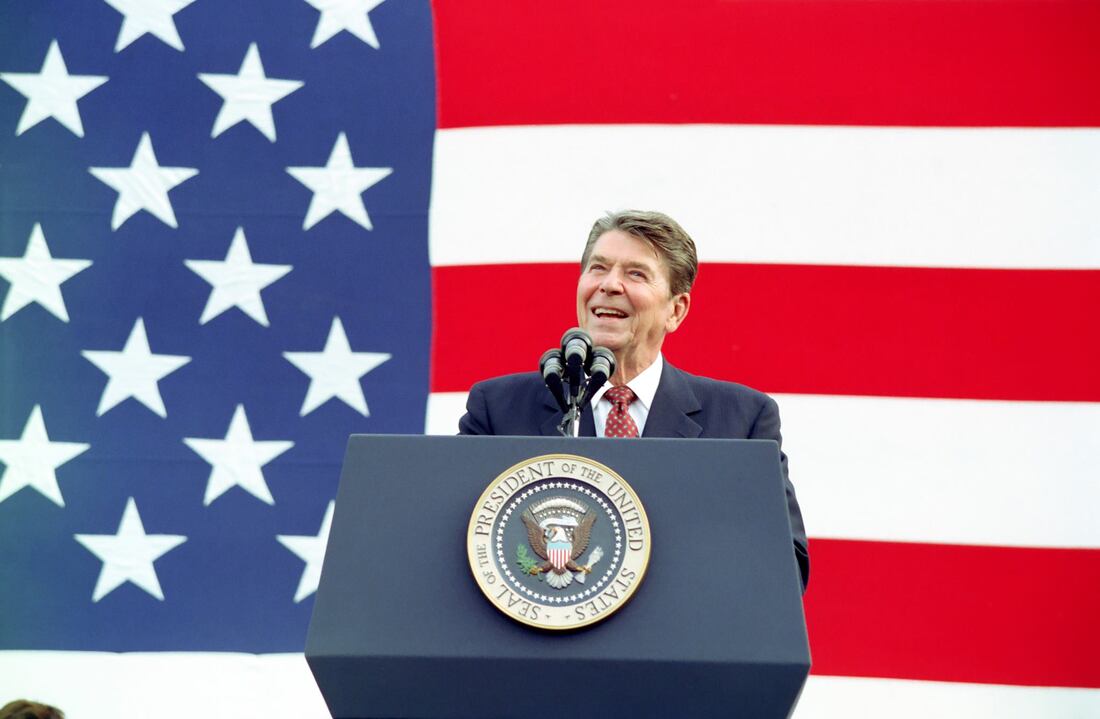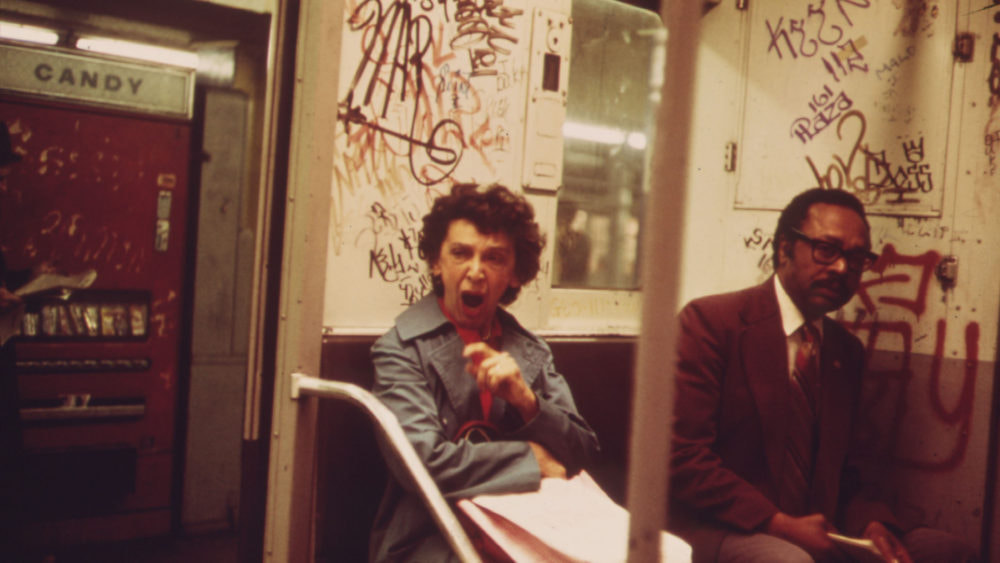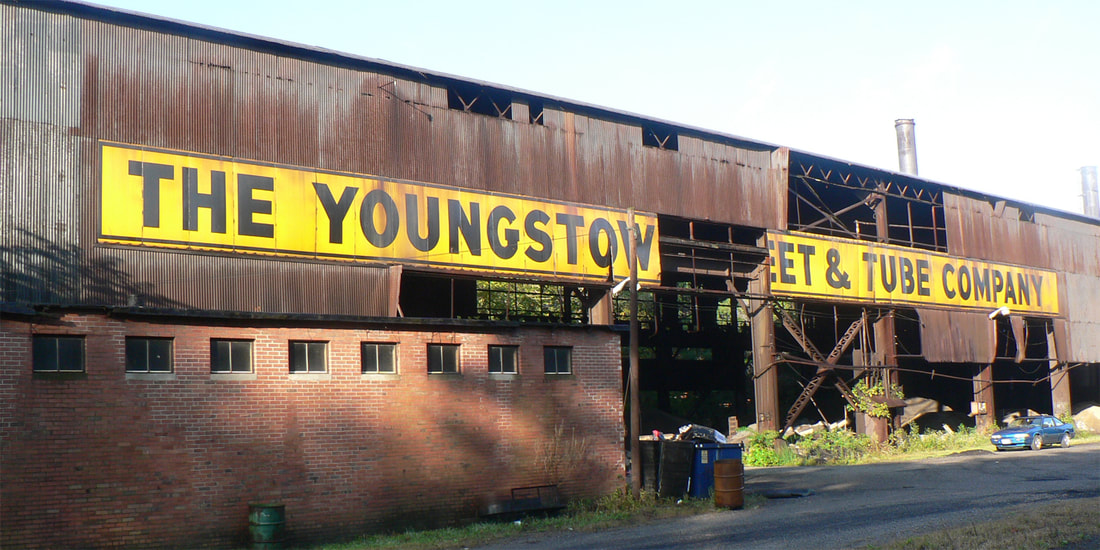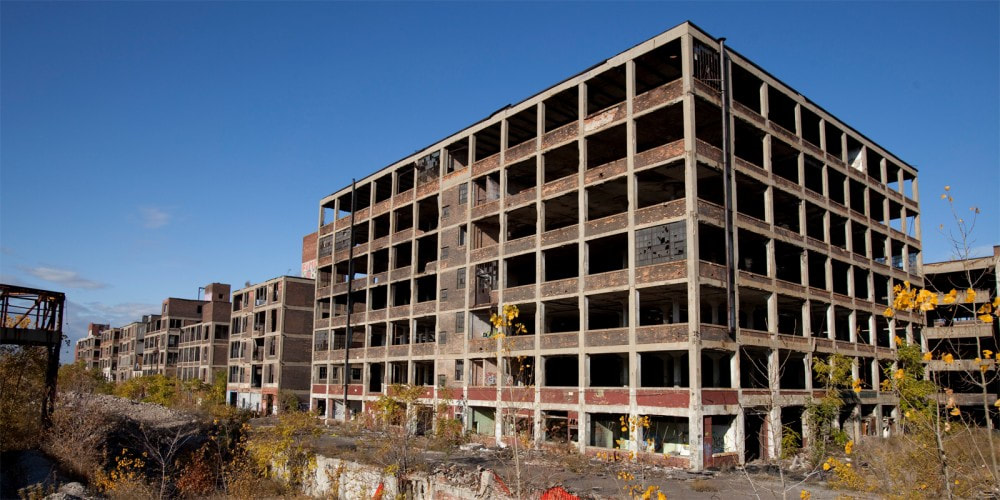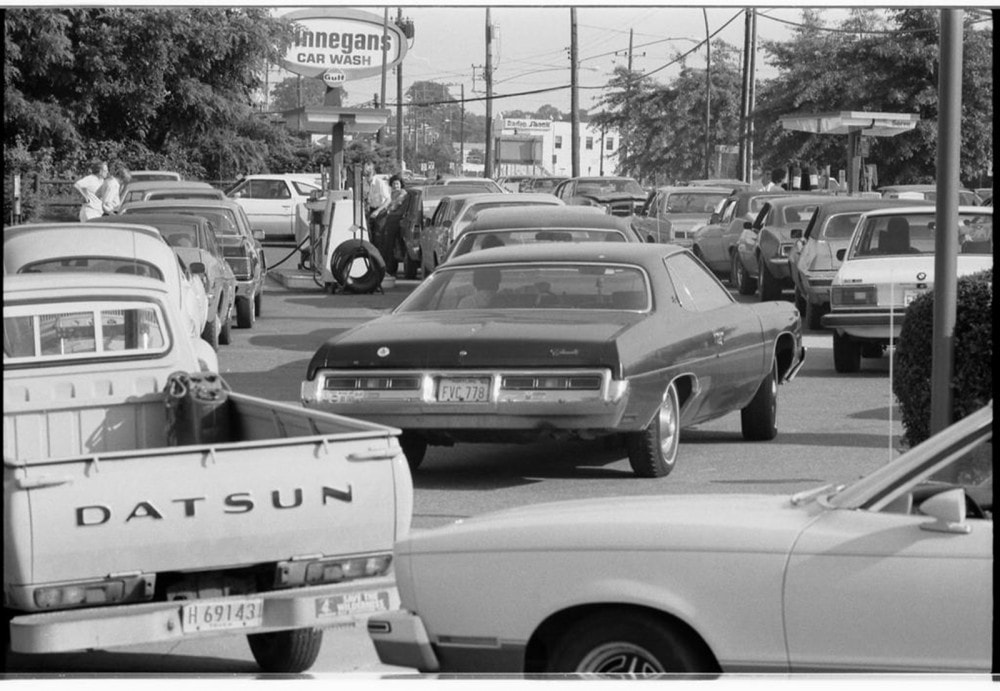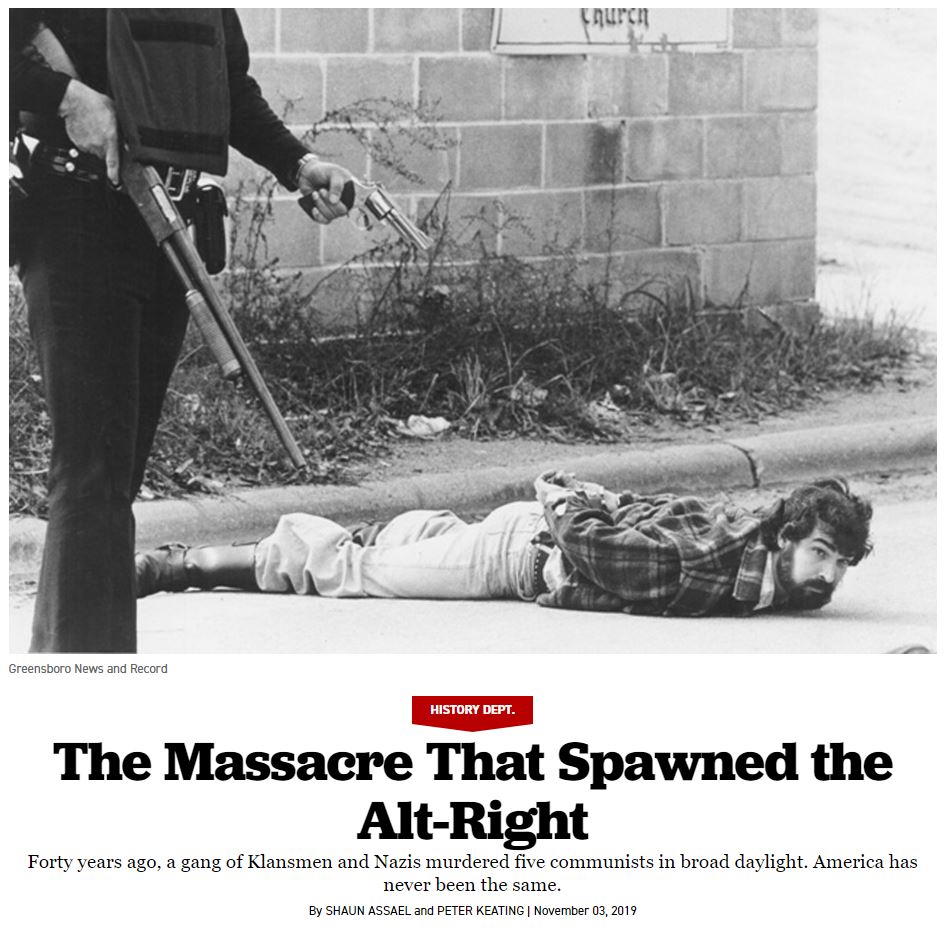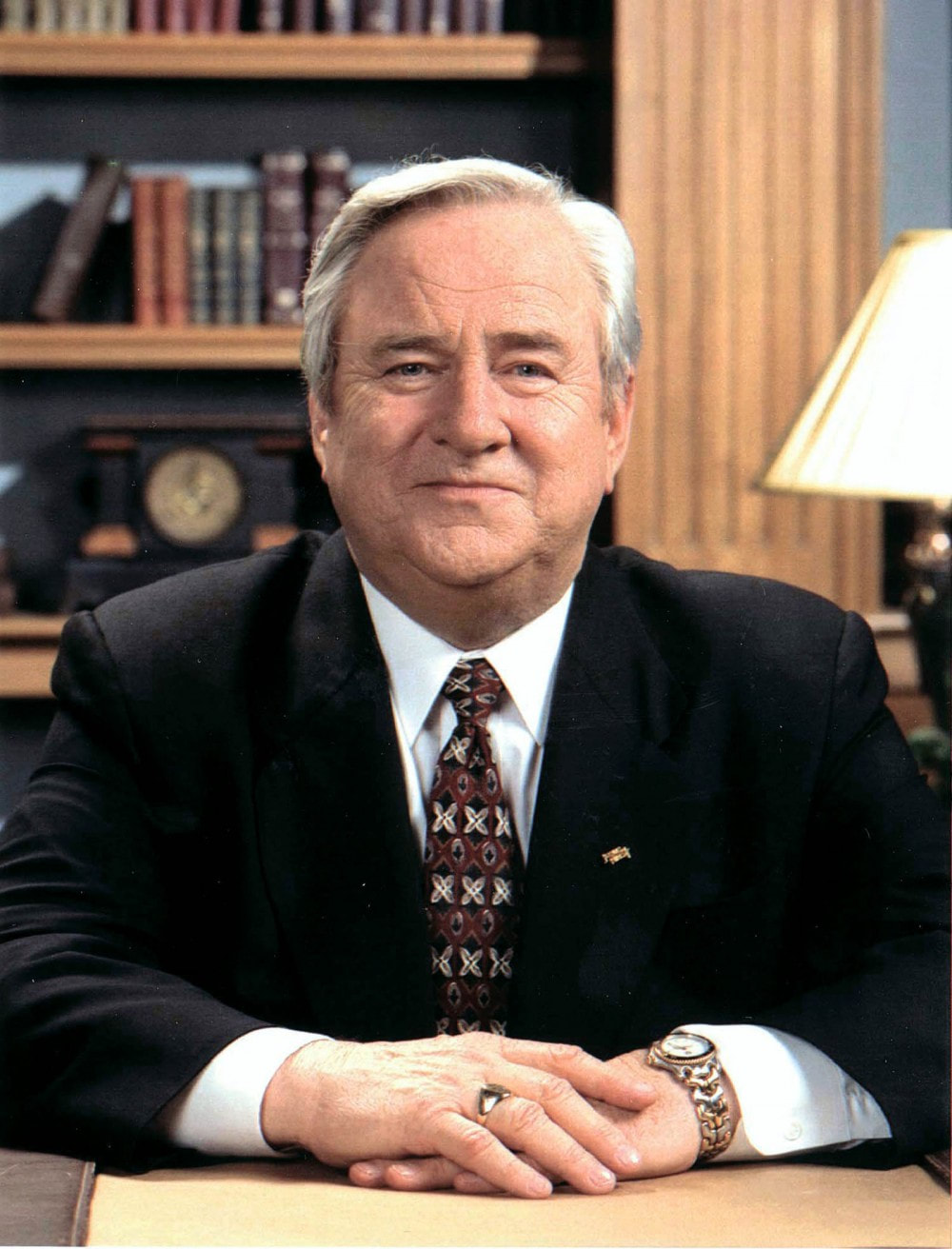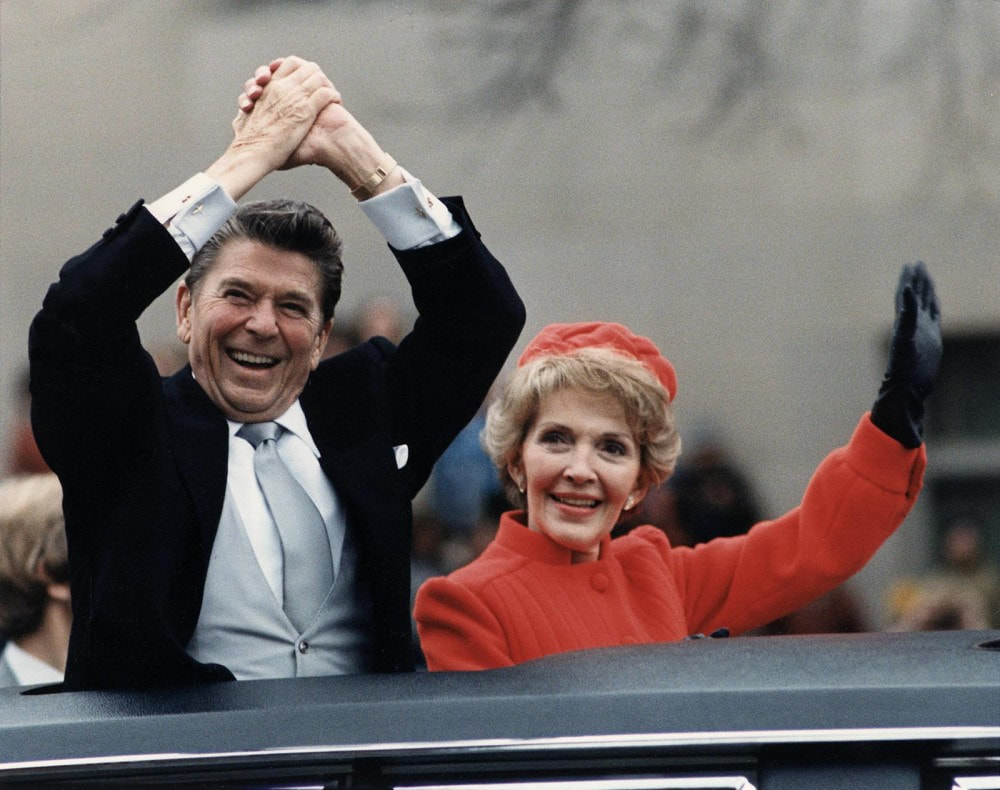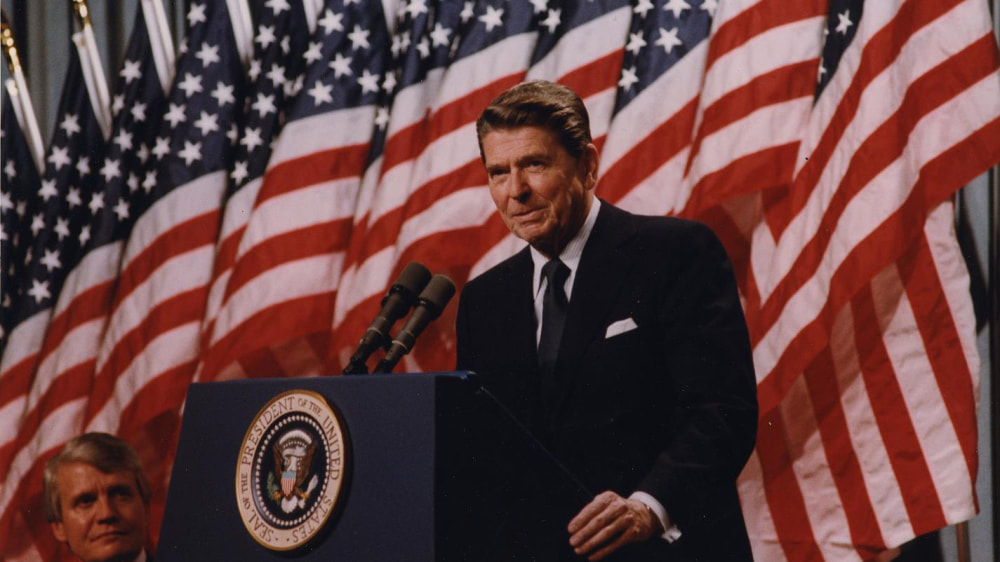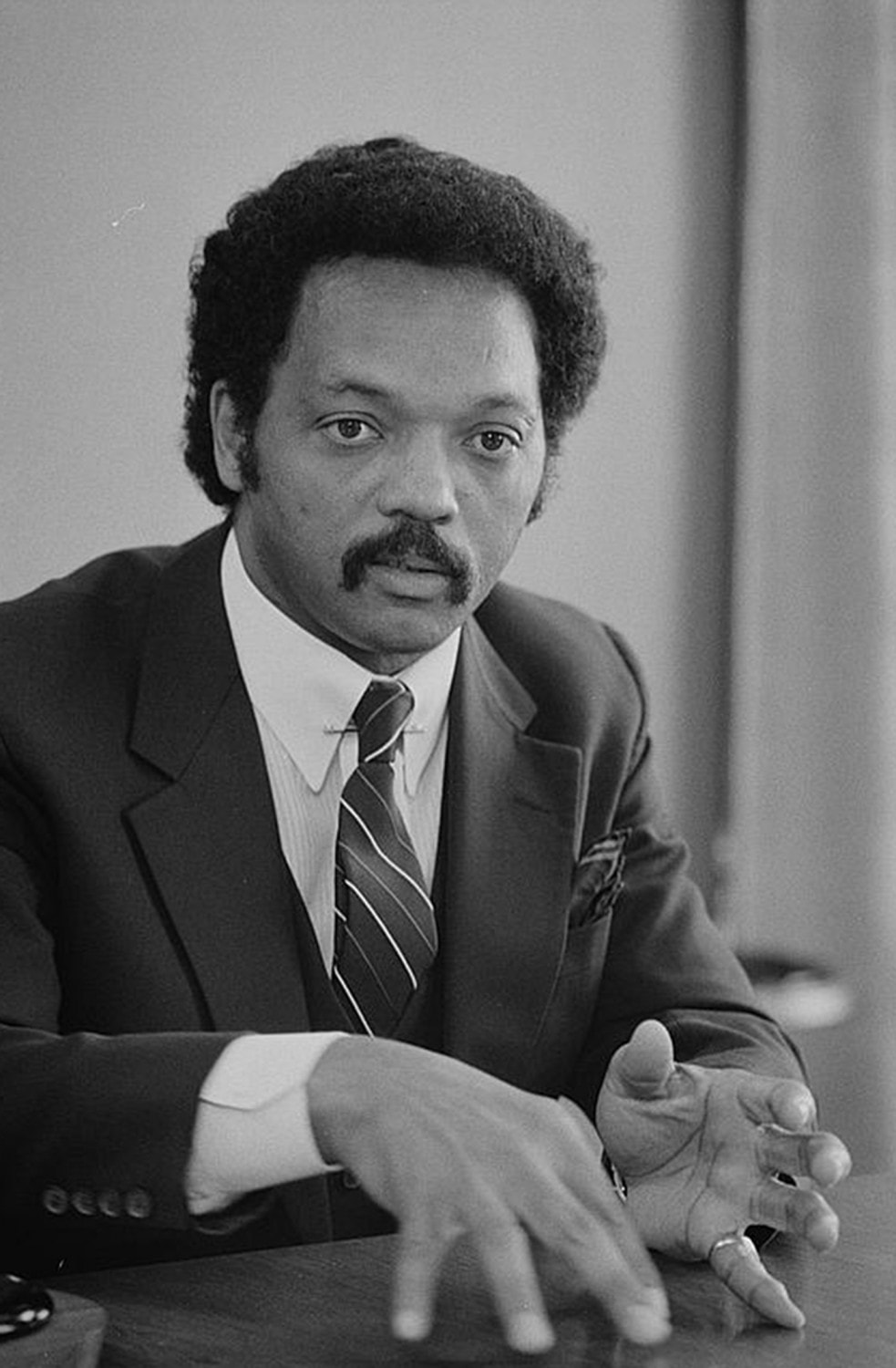The Late Cold War
1970s-1990s
Contents
The Late Cold War, 1970s-1990s:
The Nixon and Ford Eras
|
Urban decay confronted Americans of the 1960s and 1970s. As the economy sagged and deindustrialization hit much of the country, Americans increasingly associated major cities with poverty and crime. In this 1973 photo, two subway riders sit amid a graffitied subway car in New York City.
|
Deindustrialization in Detroit and elsewhere also went hand in hand with the long assault on unionization that began in the aftermath of World War II. By the mid-1970s, widely shared postwar prosperity leveled off and began to retreat. Growing international competition, technological inefficiency, and declining productivity gains stunted working- and middle-class wages.
|
Review:
- What were the effects of the OPEC oil embargo?
- What events led to Richard Nixon's resignation as President in 1974?
The Carter Era
The 1979 energy crisis panicked consumers who remembered the 1973 oil shortage, prompting many Americans to buy oil in huge quantities.
Review:
- What were the major foreign policy successes and failures of Carter?
The Reagan Era
|
Jerry Falwell, a wildly popular TV evangelist, founded the Moral Majority in the late 1970s. Decrying the demise of the nation’s morality, the organization gained a massive following and helped to cement the status of the New Christian Right in American politics.
|
Ronald Reagan secured the presidency by appealing to the growing conservatism of much of the country. Here, Ronald Reagan and his wife, Nancy Reagan, wave from a limousine during the inaugural parade in Washington, D.C., in 1981.
|
President Ronald Reagan, a master of the photo op, appears here with a row of American flags at his back at a 1982 rally for Senator David Durenberger in Minneapolis, Minnesota.
|
Jesse Jackson, pictured here in 1983, was only the second African American to mount a national campaign for the presidency. His work as a civil rights activist garnered him a significant following in the African American community but never enough to secure the Democratic nomination.
|
The AIDS epidemic hit gay and African American communities particularly hard in the 1980s, prompting widespread social stigmatization, but also prompting awareness campaigns, such as this poster featuring singer Patti LaBelle.
|
Review:
- What spurred the rise of conservatism in the late 1970s and early 1980s?
- What were the major characteristics of the conservative Reagan Revolution?
- What were Reagan's foreign policies, and how did they contribute to the fall of communism in Europe?
Iconic Images of the 1960s to 1990s
Assignments and Readings
|
|
Your browser does not support viewing this document. Click here to download the document.
| ||||||
|
|
Your browser does not support viewing this document. Click here to download the document.
| ||||||
U.S.-Iran Relations
Your browser does not support viewing this document. Click here to download the document.
| u.s.-iranian_relations.pdf | |
| File Size: | 2798 kb |
| File Type: | |
|
History of U.S.-Iran Relations Videos:
|
Your browser does not support viewing this document. Click here to download the document.
| ||||||
Primary Sources
Report of the National Advisory Commission on Civil Disorders (1968)
Riots rocked American cities in the mid-late sixties. Hundreds died, thousands were injured, and thousands of buildings were destroyed. Many communities never recovered. In 1967, devastating riots, particularly in Detroit, Michigan, and Newark, New Jersey, captivated national television audiences. President Lyndon Johnson appointed an 11-person commission, chaired by Illinois Governor Otto Kerner, to explain the origins of the riots and recommend policies to prevent them in the future.
Statement by John Kerry of Vietnam Veterans Against the War (1971)
On April 23, 1971, a young Vietnam veteran named John Kerry spoke on behalf of the Vietnam Veterans Against the War before the Senate Committee of Foreign Relations. Kerry, later a Massachusetts Senator and 2004 presidential contender, articulated a growing disenchantment with the Vietnam War and delivered a blistering indictment of the reasoning behind its prosecution.
Nixon Announcement of China Visit (1971)
Richard Nixon, who built his political career on anti-communism, worked from the first day of his presidency to normalize relations with the communist People’s Republic of China. In 1971, Richard Nixon announced that he would make an unprecedented visit there to advance American-Chinese relations. Here, he explains his intentions.
Barbara Jordan, 1976 Democratic National Convention Keynote Address (1976)
On July 12, 1976, Texas Congresswoman Barbara Jordan delivered the keynote address at the Democratic National Convention. As Americans sensed a fracturing of American life in the 1970s, Jordan called for Americans to commit themselves to a “national community” and the “common good.” Jordan began by noting she was the first black woman to ever deliver a keynote address at a major party convention and that such a thing would have been almost impossible even a decade earlier.
Jimmy Carter, “Crisis of Confidence” (1979)
On July 15, 1979, amid stagnant economic growth, high inflation, and an energy crisis, Jimmy Carter delivered a televised address to the American people. In it, Carter singled out a pervasive “crisis of confidence” preventing the American people from moving the country forward. A year later, Ronald Reagan would frame his optimistic political campaign in stark contrast to the tone of Carter’s speech, which would be remembered, especially by critics, as the “malaise speech.”
New York City Subway (1973)
“Urban Decay” confronted Americans of the 1960s and 1970s. As the economy sagged and deindustrialization hit much of the country, many Americans associated major cities with poverty and crime. In this 1973 photo, two subway riders sit amid a graffitied subway car in New York City.
“Stop ERA” Protest (1977)
In the 1970s, conservative Americans defeated the Equal Rights Amendment (ERA). With high approval ratings, the ERA–which declared, “Equality of rights under the law shall not be denied or abridged by the United States or any state on account of sex”—seemed destined to pass swiftly through state legislatures and become the Twenty-Seventh Amendment, but conservative opposition stopped the Amendment just short of ratification.
First Inaugural Address of Ronald Reagan (1981)
Ronald Reagan, a former actor, corporate spokesperson, and California governor, won the presidency in 1980 with a potent mix of personal charisma and conservative politics. In his first inaugural address, Reagan famously declared that “government is not the solution to our problem; government is the problem.”
Jerry Falwell on the “Homosexual Revolution” (1981)
“Letter from Jerry Falwell on his opposition to homosexuality and asking for support in keeping his “Old-Time Gospel Hour” television program on the air. Falwell writes that the Old Time Gospel Hour “is one of the few major ministries in America crying out against militant homosexuals” (p. 1). The letter is printed on what appears to be lined yellow notepad paper.”
Statements of AIDS Patients (1983)
HIV/AIDS confronted Americans in the 1980s. The disease was first associated with gay men (it was initially called Gay-Related Immune Disease, or GRID) and AIDS sufferers fought for recognition of the disease’s magnitude, petitioned for research funds, and battled against popular stigma associated with the disease.
Statements from The Parents Music Resource Center (1985)
In 1985, the Senate held hearings on explicit music. The Parents Music Resource Center (1985), founded by the wives of prominent politicians in Washington D.C., publicly denounced lyrics, album covers, and music videos dealing with sex, violence, and drug use. The PRMC pressured music publishers and retailers and singled out artists such as Judas Priest, Prince, AC/DC, Madonna, and Black Sabbath, and Cyndi Lauper. The following is extracted from statements by Susan Baker, the wife of then-Treasury Secretary James Baker, and Tipper Gore, wife of Senator and later Vice President Al Gore, in support of warning labels on music packaging.
Pat Buchanan on the Culture War (1992)
Pat Buchanan was a conservative journalist who worked in the Nixon and Reagan administrations before running for the Republican presidential nomination in 1992. Although he lost the nomination to George H.W. Bush, he was invited to speak at that year’s Republican National Convention, where he delivered a fiery address criticizing liberals and declaring a “culture war” at the heart of American life.
Satellites Imagined in Orbit (1981)
While Cold War fears still preyed upon Americans, satellite technology and advancements in telecommunications inspired hopes for an interconnected future. Here, an artist in 1981 depicts various satellites in orbit around the Earth.
Ronald Reagan and the American Flag (1982)
President Ronald Reagan, a master of the “photo op,” appears here with a row of American flags at his back at a 1982 rally for Senator David Durenberger in Minneapolis, Minnesota.
Riots rocked American cities in the mid-late sixties. Hundreds died, thousands were injured, and thousands of buildings were destroyed. Many communities never recovered. In 1967, devastating riots, particularly in Detroit, Michigan, and Newark, New Jersey, captivated national television audiences. President Lyndon Johnson appointed an 11-person commission, chaired by Illinois Governor Otto Kerner, to explain the origins of the riots and recommend policies to prevent them in the future.
Statement by John Kerry of Vietnam Veterans Against the War (1971)
On April 23, 1971, a young Vietnam veteran named John Kerry spoke on behalf of the Vietnam Veterans Against the War before the Senate Committee of Foreign Relations. Kerry, later a Massachusetts Senator and 2004 presidential contender, articulated a growing disenchantment with the Vietnam War and delivered a blistering indictment of the reasoning behind its prosecution.
Nixon Announcement of China Visit (1971)
Richard Nixon, who built his political career on anti-communism, worked from the first day of his presidency to normalize relations with the communist People’s Republic of China. In 1971, Richard Nixon announced that he would make an unprecedented visit there to advance American-Chinese relations. Here, he explains his intentions.
Barbara Jordan, 1976 Democratic National Convention Keynote Address (1976)
On July 12, 1976, Texas Congresswoman Barbara Jordan delivered the keynote address at the Democratic National Convention. As Americans sensed a fracturing of American life in the 1970s, Jordan called for Americans to commit themselves to a “national community” and the “common good.” Jordan began by noting she was the first black woman to ever deliver a keynote address at a major party convention and that such a thing would have been almost impossible even a decade earlier.
Jimmy Carter, “Crisis of Confidence” (1979)
On July 15, 1979, amid stagnant economic growth, high inflation, and an energy crisis, Jimmy Carter delivered a televised address to the American people. In it, Carter singled out a pervasive “crisis of confidence” preventing the American people from moving the country forward. A year later, Ronald Reagan would frame his optimistic political campaign in stark contrast to the tone of Carter’s speech, which would be remembered, especially by critics, as the “malaise speech.”
New York City Subway (1973)
“Urban Decay” confronted Americans of the 1960s and 1970s. As the economy sagged and deindustrialization hit much of the country, many Americans associated major cities with poverty and crime. In this 1973 photo, two subway riders sit amid a graffitied subway car in New York City.
“Stop ERA” Protest (1977)
In the 1970s, conservative Americans defeated the Equal Rights Amendment (ERA). With high approval ratings, the ERA–which declared, “Equality of rights under the law shall not be denied or abridged by the United States or any state on account of sex”—seemed destined to pass swiftly through state legislatures and become the Twenty-Seventh Amendment, but conservative opposition stopped the Amendment just short of ratification.
First Inaugural Address of Ronald Reagan (1981)
Ronald Reagan, a former actor, corporate spokesperson, and California governor, won the presidency in 1980 with a potent mix of personal charisma and conservative politics. In his first inaugural address, Reagan famously declared that “government is not the solution to our problem; government is the problem.”
Jerry Falwell on the “Homosexual Revolution” (1981)
“Letter from Jerry Falwell on his opposition to homosexuality and asking for support in keeping his “Old-Time Gospel Hour” television program on the air. Falwell writes that the Old Time Gospel Hour “is one of the few major ministries in America crying out against militant homosexuals” (p. 1). The letter is printed on what appears to be lined yellow notepad paper.”
Statements of AIDS Patients (1983)
HIV/AIDS confronted Americans in the 1980s. The disease was first associated with gay men (it was initially called Gay-Related Immune Disease, or GRID) and AIDS sufferers fought for recognition of the disease’s magnitude, petitioned for research funds, and battled against popular stigma associated with the disease.
Statements from The Parents Music Resource Center (1985)
In 1985, the Senate held hearings on explicit music. The Parents Music Resource Center (1985), founded by the wives of prominent politicians in Washington D.C., publicly denounced lyrics, album covers, and music videos dealing with sex, violence, and drug use. The PRMC pressured music publishers and retailers and singled out artists such as Judas Priest, Prince, AC/DC, Madonna, and Black Sabbath, and Cyndi Lauper. The following is extracted from statements by Susan Baker, the wife of then-Treasury Secretary James Baker, and Tipper Gore, wife of Senator and later Vice President Al Gore, in support of warning labels on music packaging.
Pat Buchanan on the Culture War (1992)
Pat Buchanan was a conservative journalist who worked in the Nixon and Reagan administrations before running for the Republican presidential nomination in 1992. Although he lost the nomination to George H.W. Bush, he was invited to speak at that year’s Republican National Convention, where he delivered a fiery address criticizing liberals and declaring a “culture war” at the heart of American life.
Satellites Imagined in Orbit (1981)
While Cold War fears still preyed upon Americans, satellite technology and advancements in telecommunications inspired hopes for an interconnected future. Here, an artist in 1981 depicts various satellites in orbit around the Earth.
Ronald Reagan and the American Flag (1982)
President Ronald Reagan, a master of the “photo op,” appears here with a row of American flags at his back at a 1982 rally for Senator David Durenberger in Minneapolis, Minnesota.
Slideshows
Videos
|
|
|
|
|
|
Digital History Textbook
The Past Three Decades: Years of Crisis - Years of Triumph
This chapter examines the impact of the collapse of Communism on international stability; the resurgence of the American economy during the 1990s; and the presidencies of Ronald Reagan, George Bush and Bill Clinton.
Watergate
Crisis of Political Leadership
Restraining the Imperial Presidency
New Style Presidents
Wrenching Economic Transformations
The Age of Inflation
Oil Embargo
Foreign Competition
Whipping Stagflation
A New American Role in the World
Détente
Foreign Policy Triumphs
No Islands of Stability
The Reagan Revolution
The Gipper
Reaganomics
The Celebration of Wealth
The Reagan Doctrine
A Remarkable Ideological Turnaround
The Reagan Revolution in Perspective
The First Bush Presidency
Collapse of Communism
This chapter examines the impact of the collapse of Communism on international stability; the resurgence of the American economy during the 1990s; and the presidencies of Ronald Reagan, George Bush and Bill Clinton.
Watergate
Crisis of Political Leadership
Restraining the Imperial Presidency
New Style Presidents
Wrenching Economic Transformations
The Age of Inflation
Oil Embargo
Foreign Competition
Whipping Stagflation
A New American Role in the World
Détente
Foreign Policy Triumphs
No Islands of Stability
The Reagan Revolution
The Gipper
Reaganomics
The Celebration of Wealth
The Reagan Doctrine
A Remarkable Ideological Turnaround
The Reagan Revolution in Perspective
The First Bush Presidency
Collapse of Communism
